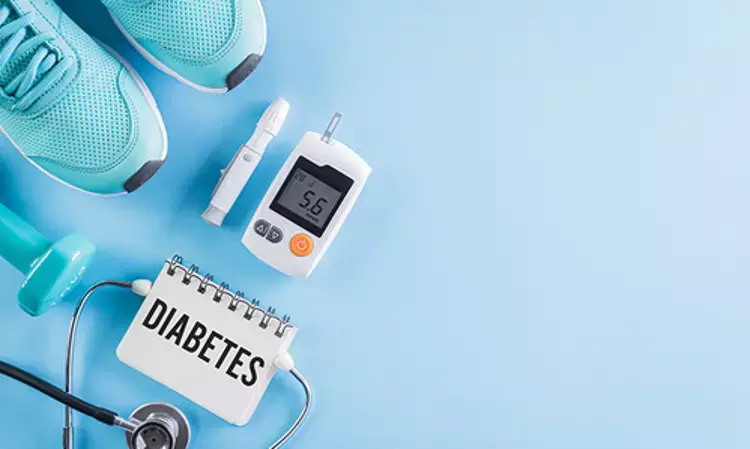- Home
- Medical news & Guidelines
- Anesthesiology
- Cardiology and CTVS
- Critical Care
- Dentistry
- Dermatology
- Diabetes and Endocrinology
- ENT
- Gastroenterology
- Medicine
- Nephrology
- Neurology
- Obstretics-Gynaecology
- Oncology
- Ophthalmology
- Orthopaedics
- Pediatrics-Neonatology
- Psychiatry
- Pulmonology
- Radiology
- Surgery
- Urology
- Laboratory Medicine
- Diet
- Nursing
- Paramedical
- Physiotherapy
- Health news
- Fact Check
- Bone Health Fact Check
- Brain Health Fact Check
- Cancer Related Fact Check
- Child Care Fact Check
- Dental and oral health fact check
- Diabetes and metabolic health fact check
- Diet and Nutrition Fact Check
- Eye and ENT Care Fact Check
- Fitness fact check
- Gut health fact check
- Heart health fact check
- Kidney health fact check
- Medical education fact check
- Men's health fact check
- Respiratory fact check
- Skin and hair care fact check
- Vaccine and Immunization fact check
- Women's health fact check
- AYUSH
- State News
- Andaman and Nicobar Islands
- Andhra Pradesh
- Arunachal Pradesh
- Assam
- Bihar
- Chandigarh
- Chattisgarh
- Dadra and Nagar Haveli
- Daman and Diu
- Delhi
- Goa
- Gujarat
- Haryana
- Himachal Pradesh
- Jammu & Kashmir
- Jharkhand
- Karnataka
- Kerala
- Ladakh
- Lakshadweep
- Madhya Pradesh
- Maharashtra
- Manipur
- Meghalaya
- Mizoram
- Nagaland
- Odisha
- Puducherry
- Punjab
- Rajasthan
- Sikkim
- Tamil Nadu
- Telangana
- Tripura
- Uttar Pradesh
- Uttrakhand
- West Bengal
- Medical Education
- Industry
AIP associated with risk of developing T2DM in women with gestational diabetes history: Study

A new study published in the journal of BMC Diabetology and Metabolic Syndrome revealed that the risk of developing type 2 diabetes mellitus (T2DM) was 5-times greater for women with a history of gestational diabetes mellitus (GDM) who were in the highest quartile of the atherogenic index of plasma (AIP).
The logarithmic ratio of triglyceride (TG) to high-density lipoprotein cholesterol (HDL-C) levels is used to compute the AIP, a unique lipid metric. AIP was first suggested as a marker for atherosclerosis and cardiovascular disease risk prediction, but more recently, it has been discovered to be strongly linked to insulin resistance, metabolic syndrome, and the onset of T2DM. Its function in women with a history of GDM, a particular high-risk group, is yet unknown, nevertheless. Thus, this study looked at the connection between the prevalence of type 2 diabetes in women with a history of GDM and the AIP.
Data from 4,690 parous women who were stratified by GDM history from the 2007–2018 National Health and Nutrition Examination Survey (NHANES) were used in a cross-sectional study. To assess the relationship between the AIP and T2DM in women with a history of GDM, multivariate logistic regression models were used.
To investigate effect modification, subgroup analysis and interaction tests were conducted within the GDM group. The linearity of the relationship between the AIP and the prevalence of type 2 diabetes was evaluated using restricted cubic spline (RCS) models. To find out if the AIP score mediated the association between GDM history and T2DM, mediation analysis was also performed.
Elevated AIP levels were substantially linked to a greater incidence of T2DM in women with a history of GDM. Across AIP quartiles, a dose-response association was found, and women in the highest quartile had a significantly higher risk (adjusted OR = 5.01, 95% CI: 1.89, 13.25, p < 0.01).
In this cohort, AIP and T2DM were found to be linearly associated by RCS analysis. Additionally, mediation analysis showed that the AIP accounted for 8.0% of the overall impact (95% CI: 5.1–12.5%), partially mediating the link between GDM and T2DM.
Overall, as of the now, no biomarker for clinical risk categorization of T2DM after GDM has been developed. These results show that among women with a history of gestational diabetes, the AIP significantly correlates with the risk of type 2 diabetes.
Source:
Sheng, Y., Cun, D., Chen, Y., Hu, X., Zhang, X., Sun, X., & Song, S. (2025). Association between atherogenic index of plasma and type 2 diabetes in women with a history of gestational diabetes mellitus: a cross-sectional study. Diabetology & Metabolic Syndrome, 17(1), 344. https://doi.org/10.1186/s13098-025-01914-2
Neuroscience Masters graduate
Jacinthlyn Sylvia, a Neuroscience Master's graduate from Chennai has worked extensively in deciphering the neurobiology of cognition and motor control in aging. She also has spread-out exposure to Neurosurgery from her Bachelor’s. She is currently involved in active Neuro-Oncology research. She is an upcoming neuroscientist with a fiery passion for writing. Her news cover at Medical Dialogues feature recent discoveries and updates from the healthcare and biomedical research fields. She can be reached at editorial@medicaldialogues.in
Dr Kamal Kant Kohli-MBBS, DTCD- a chest specialist with more than 30 years of practice and a flair for writing clinical articles, Dr Kamal Kant Kohli joined Medical Dialogues as a Chief Editor of Medical News. Besides writing articles, as an editor, he proofreads and verifies all the medical content published on Medical Dialogues including those coming from journals, studies,medical conferences,guidelines etc. Email: drkohli@medicaldialogues.in. Contact no. 011-43720751


